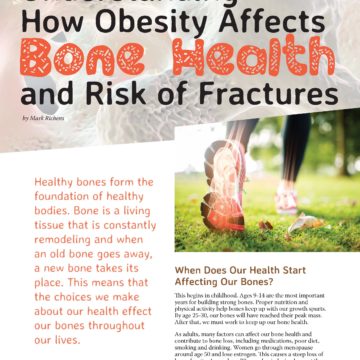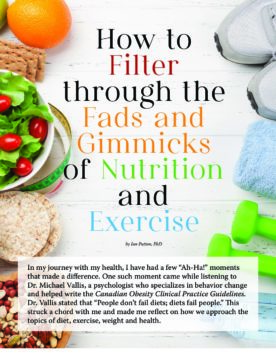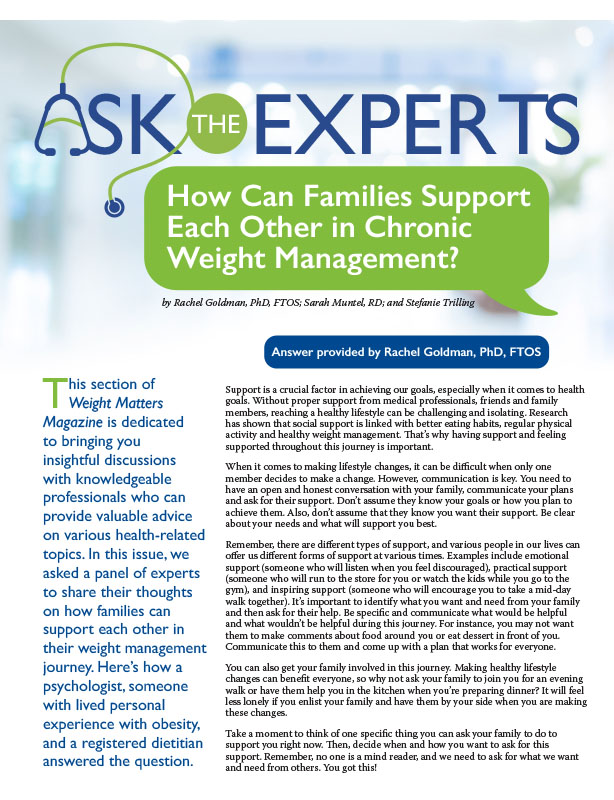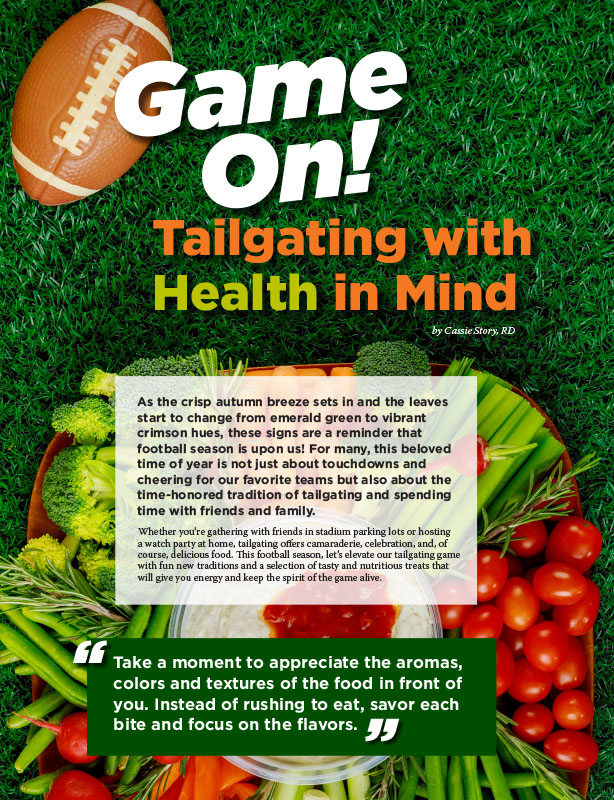How to Stay Healthy While Cooking at Home, Dining out and Ordering In

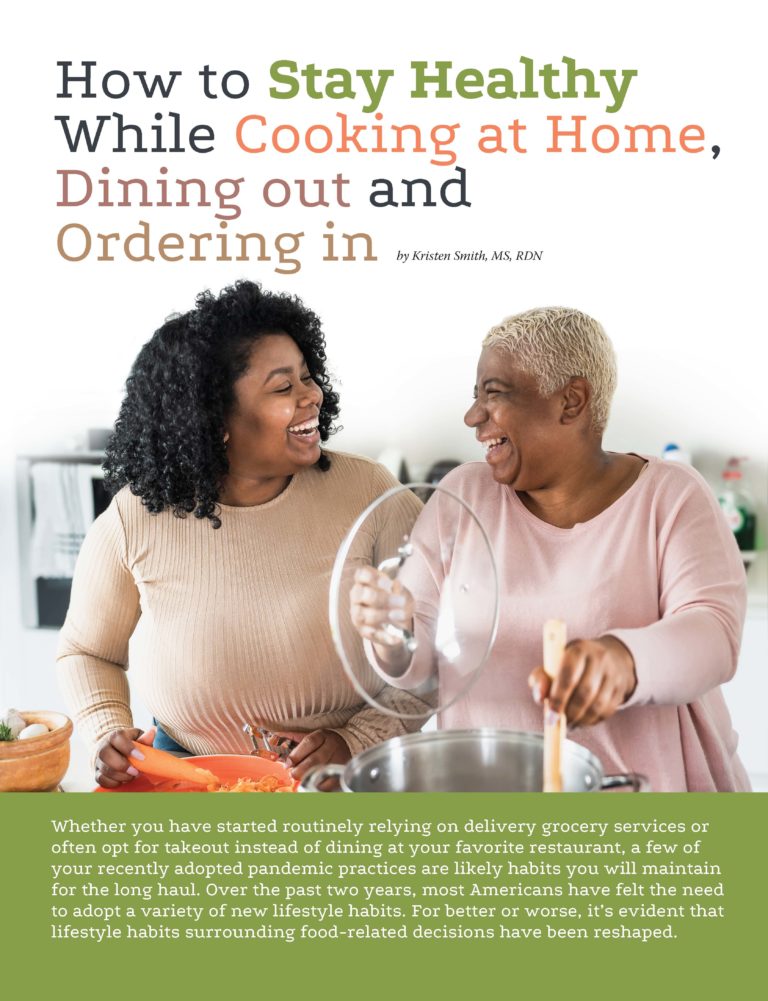
by Kristen Smith, MS, RDN
Spring 2022
Whether you have started routinely relying on delivery grocery services or often opt for takeout instead of dining at your favorite restaurant, a few of your recently adopted pandemic practices are likely habits you will maintain for the long haul. Over the past two years, most Americans have felt the need to adopt a variety of new lifestyle habits. For better or worse, it’s evident that lifestyle habits surrounding food-related decisions have been reshaped.
What Has Changed with Our Food-related Habits?
So many things have changed in the past couple of years with everyone’s food-related habits. More people are working from home, resulting in a majority of meals and snacks eaten at home. With a refrigerator or pantry of food available, it can be a challenge not to graze all day long. Grocery store outings have changed. Some individuals are relying on curbside pick-up and delivery services while others are racing through the grocery store itself. Many people still hold a fear of dining out with large crowd gatherings and opt for dining alfresco or getting takeout. These are only a few examples of the lifestyle changes affecting food-related behaviors.
Maintaining a healthier weight during change can undoubtedly be challenging. In this article, we will discuss tips and tricks for how to stay healthy while cooking at home, dining out and ordering your food in!
Cooking at Home
Preparing meals within the walls of your own home can offer numerous financial and health benefits. Cooking your own meals allows for full control over what ingredients you add to the dish. You can boost the nutritional content of your meals and keep certain ingredients such as added fats and sugars in check.
Cooking at home gives you the opportunity to experiment in the kitchen by substituting certain ingredients to make your favorite dishes healthier. Don’t forget the financial benefit; most meals prepared at home will save you significant amounts of money compared to meals ordered out.
Preparing to Cook at Home
The first action item when preparing to cook at home is to survey your pantry for staple items and determine what you need to restock. Below is a list 10 staple foods to keep on hand:
- Dried or canned beans and lentils
- Nuts and nut butter
- Whole grains (brown rice, quinoa, bulgur, etc.)
- Frozen vegetables and fruit
- Heart-healthy cooking oils (olive or canola oil)
- Spices, herbs and onions
- Fresh fruits and vegetables that can be refrigerated (apples, pears, carrots, sweet potatoes, etc.)
- Frozen fish, poultry and meat
- Greek yogurt
- Eggs
Once you have an adequately stocked kitchen, you can start planning. Spend a few minutes throughout the week planning your meals and snacks for the coming days or even the entire week. Write out what you plan to prepare or grab for every meal or snack for the coming days. Aim to create balanced meals that include lean protein sources, fruits, vegetables and whole grains.
Preparing and Cooking Your Meals
In addition to creating a meal plan, you need to schedule a time to cook and prep. If you have limited time to prepare meals at your actual mealtime, evaluate how you can prepare ahead. On weekends or less busy days, wash and chop vegetables, pre-portion, season your proteins or even assemble any meals ahead of time like salads or sandwiches.
Spend some time discovering your favorite cooking methods. Gone are the days when the only healthy cooking methods were baking and grilling. Be creative and use a variety of cooking methods such as:
- Steaming
- Poaching
- Roasting
- Broiling
- Using an electrical kitchen appliance (slow cooker, air fryer or pressure cooker)
Healthy Food Can Be Tasty Too!
Healthy foods are often thought to lack flavor and taste. You might think the only way to flavor foods is to use large amounts of cooking oils, high-fat cream sauces or lots of breading. Don’t fall for this myth! There are numerous ways to add flavor to your dishes without significantly increasing the amount of calories and fat.
Experiment with cooking vegetables and grains in broth. For a bold boost of flavor with few calories, add vinegar or lemon juice to vegetables and meats. A variety of spices and herbs can easily help maximize a dish’s flavor!
Dining Out
Dining out at a restaurant or fast food establishment can present huge temptations and obstacles for someone trying to eat healthily. Tempting menu options, unrecognizable calorie-loaded options and peer influence can wreak havoc on even the most disciplined of eaters. Restaurants may add ingredients with extra salt or fat or use cooking methods that increase the calorie content. However, with a few tips and tricks, it is also possible to still follow a healthy diet when dining out.
Start with a Plan
Start by doing a bit of planning before you head to the restaurant. Locate the restaurant’s menu online and carefully select what you want to order. Most restaurants offer the nutritional breakdown of their food on their website so you can make informed choices.
Without planning ahead, both hunger and peer pressure can lead to stress when dining out. Plan to have a small snack within an hour or two of dining out to prevent extreme hunger and overeating once you get to the restaurant.
Ask Questions if You Need to
Don’t be afraid to ask questions about food preparation techniques when dining out. The way food is cooked can have a significant impact on the number of calories it contains. Look for foods that have been steamed, roasted, grilled or broiled. Foods described as pan-fried, fried or crispy will typically contain higher amounts of fat and calories. Try to moderate foods with sauces and gravies.
Ask for Ingredient Substitutions
Substitutions can significantly improve the nutrition content of a dish or meal when dining out. To keep calories in check, ask to double the vegetable side dish and skip the potatoes or rice. Ask for salad dressing, sauces and creams to be put on the side. Be mindful of high-calorie toppings on salads and sandwiches. Foods like mayonnaise, bacon and croutons can quickly convert a healthy meal into a not-so-healthy one.
Ordering Takeout
You likely already know that not all takeout is created the same. Options can range from the super healthy to the not-so-great, with many other options in between. Many of the techniques you can use for dining out also apply to ordering takeout. However, you will get the most benefits by preparing your own food and eating in an environment where you can be mindful about food.
Avoid Eating Directly from the Takeout Container
First and foremost, try to avoid eating directly from the takeout container. Whether you order an entire meal or separate components, eating from the container can lead to mindless eating habits and possibly overeating. It’s common for food establishments to offer meals with excessive portion sizes, sometimes leaving you with a plate of food that could be enough for two people.
To keep portion sizes in check, grab a plate and portion out the foods you plan to eat. When placing your takeout order, choose options that include lean protein and vegetables. Aim to fill about half of your plate with vegetables.
Ask for Ingredients on the Side
Lastly, consider ordering some of your meals partially constructed to have more control over the added ingredients. For example, with salads, ask for ingredients like cheese, croutons or dressings to be put on the side. Tacos are another example of a meal where you can easily ask for the ingredients to be served individually so you can assemble them yourself. For entrees that include any toppings or sauces, ask for those to be held. Not only will assembling some of the foods at home likely help save a few calories, but it will also likely enhance the flavor and quality of the food.
Eating Healthy Doesn’t Have to be Hard!
We know all know that life can get crazy and it can be difficult to follow a strict diet or meal plan when you have so many other things going on. Just know that no matter what your situation is, there is usually a way to make sure that what you’re eating is healthy and good for your body!
About the Author:
Kristen Smith, MS, RDN, is a bariatric surgery program coordinator in Atlanta, Georgia. Kristen has been a practicing registered dietitian for nearly two decades and is a national spokesperson for the Academy of Nutrition and Dietetics. Her nutrition expertise has been featured in interviews on Good Morning America, The New York Times, WebMD, US News and much more.
by Rachel Goldman, PhD, FTOS; Sarah Muntel, RD; and Stefanie Trilling Winter 2024 This section of Weight…
Read Articleby Kelli Richardson, RD You’ve probably heard the generic advice before: Eat your fruits and veggies. Limit…
Read Articleby Cassie Story, RD Fall 2023 As the crisp autumn breeze sets in and the leaves start…
Read Article




